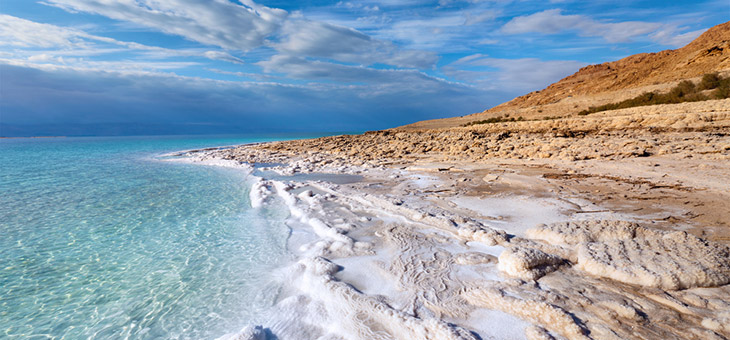The world is full of natural wonders, but some of the most beautiful are at risk due to the damage being done by climate change.
Some sites have already gone past the tipping point, and rising sea levels threaten entire countries and islands. We have picked out eight of the most beautiful locations around the globe that, unfortunately, might not be around for too much longer.
1. Great Barrier Reef
The Great Barrier Reef is the largest living thing on Earth, and even visible from outer space. Unless you have been living under a rock, you would also know that it is suffering from devastating coral bleaching thanks to climate change. The 2300km-long ecosystem comprises thousands of reefs and hundreds of islands made of more than 600 types of hard and soft coral. It is home to countless species of colourful fish, molluscs and starfish, plus turtles, dolphins and sharks. This World Heritage listed site is right on our doorstep and if you have never seen it before, you should make the journey soon.
2. Glacier National Park
This stunning US national park in Montana was once home to more than 150 glaciers. Today there are fewer than 25 and, according to current climate change predictions, those remaining could be completely gone as early as 2030. The area is home to grizzly bears, mountain goats, lynxes and wolverines, all of which will be under threat as the ecosystem continues to undergo significant changes.
3. The Alps
The highest and most extensive mountain range in Europe, the Alps stretch about 1200km across eight countries (Austria, France, Germany, Italy, Switzerland, Slovenia, Liechtenstein and Monaco). Temperatures in the Alps have risen by just under 2°C over the past 120 years, almost twice as much as the global average, and they are set to rise even more. Researchers are predicting a further 2°C increase over the next 40 years. Around three per cent of Alpine glacial ice is lost per year, and experts believe that the glaciers could disappear entirely by 2050.
4. The Dead Sea
Despite its name, The Dead Sea is actually a very salty lake bordered by Jordan, Israel and Palestine. It is thought the Dead Sea was one of the world’s first health resorts, used by Herod the Great in Roman times. The healing properties of the salt and minerals from the area are still used to this very day. The Dead Sea isn’t so much at risk from climate change, but rather selfishness and a lack of governance. In the past 40 years, the lake has shrunk by over a third of its original size due to neighbouring countries drawing water from the River Jordan (the lake’s only inflow). Experts predict that unless this changes it could disappear entirely in 50 years. The decline of the Dead Sea level is creating major problems, including sink holes, receding sea shores and other effects on the environment. The Jordanian Government is taking steps to address the damage with a proposal to make a canal between the Red Sea and the Dead Sea.
5. Seychelles
The Seychelles consists of about 115 islands in the Indian Ocean, off the coast of Kenya – and is so beautiful that it has been compared to the Garden of Eden. The coral in the area, once famous around the world, has already experienced significant damage thanks to the impact of climate change, and rising sea levels will put most of the archipelago under water in 50 to 100 years. This is terrible for tourists, but it’s worse for the population of 90,000 who call these islands home.
6. Venice, Italy
The romantic canals of the historic city of Venice are slowly bringing about its downfall as the city continues to sink and sea levels continue to rise. The latest report on sea level rises suggests that Venice will be uninhabitable by the end of the century. The ancient and iconic city will be flooded because the Mediterranean Sea is forecast to rise by up to 140cm before 2100, according to the research.
7. Maldives
The average elevation of the Maldives is just 1.5m above sea level, leaving it precariously placed. Its beaches, blue lagoons and extensive reefs are very popular with tourists, but the threat from rising sea levels is so real that the Government has already started buying land in other countries for citizens who face displacement in the near future.
8. Athabasca Glacier
The most visited glacier in Canada has slowly been melting for the past 125 years, with the southern edge retreating more than 1.5km over that time. The rate at which the glacier has been melting, though, has increased significantly in recent years and it is currently losing anywhere between two to three metres per year. There are five other glaciers that make up the Colombia Icefield in the Canadian Rockies, but none are quite as accessible or as spectacular as the Athabasca Glacier.
Related articles:
How to respect your destination
Does your diet affect the planet?
Responsible travel

